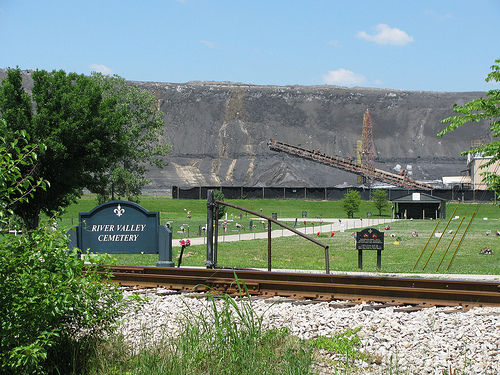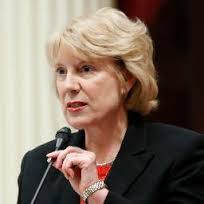Public Cemetery Districts — A Dying Breed?
Apparently 2012 wasn’t a banner year for California cemeteries, particularly the one maintained by the Kern River Valley Cemetery District.
It’s not that there isn’t a market for plots. The U.S. Census Bureau says 242,848 Californians died last year alone.
People are just dying to get in somewhere else.
A measure — SB159 by Sen. Jean Fuller, a Bakersfield Republican – aims to help the cemetery bury more bodies. The Senate Governance & Finance committee approved the bil March 13.
The cemetery business is depressed, in part, because more of the deceased are going with cremation, a cheaper option requiring, at most, some shelf space in a columbarium.
Another is competition.
In July 2009, the Federal Veterans Administration opened the Bakersfield National Cemetery some 40 miles from the Kern River cemetery. It has space for 200,000 veterans and their families.
And it’s cutting into the Kern River cemetery’s action.
During the most recent fiscal year, Bakersfield National Cemetery performed 642 burials. The year before it was 588 — more than double the 221 burials performed in the cemetery’s first year.
 The Senate Governance and Finance Committee analysis of Fuller’s bill says it all:
The Senate Governance and Finance Committee analysis of Fuller’s bill says it all:
“After the veterans’ cemetery opened, annual interments in the district’s cemetery decreased, creating significant fiscal challenges.”
The bill allows Kern River to bury up to 40 people each year, a maximum of 400 total, who don’t live within the cemetery district, as long as there’s plenty of space left for those who live within the district and the non-residents pay a fee to be buried there.
Gov. Jerry Brown has taken no position on the measure but last July signed legislation doing the same thing for three cemetery districts — two in Shasta County and one in Solano.
California’s 253 public cemetery districts are separate local governments, located mostly in rural areas or suburban areas that once were rural.
They pay for their expenses through internment fees and a piece of local property tax revenue. Generally, only residents and taxpayers or former residents and taxpayers of the districts – and their families – are eligible for burial.
Like Kern River, business at the Shasta cemetery districts tis down after the opening the Northern California Veterans Cemetery in 2005.
Similarly, the Silveyville Cemetery District in Solano County, which operates the Dixon, Binghamton and Tremont cemeteries, has been forced to dig up new business because the federal government opened the Sacramento Valley National Cemetery in 2006, less than 15 miles from all three of the district’s cemeteries.
The cemetery and mortuary association complained Fuller’s bill cuts into their action by “creating an opportunity and incentive for municipalities to engage in business practices that compete with the private sector.”
They raised similar objections to previous such bills.
The Democratic governor has also signed legislation allowing the Davis Cemetery District to bury up to 500 persons who aren’t residents of the district at its 820 Pole Line Road cemetery.
In that case, the bill’s author — Assemblywoman Mariko Yamada, a Davis Democrat — said the change in law was needed because the Jewish section of the cemetery was nearly full.
Yolo County’s only synagogue bought a second round of plots but without a special exemption some members of the congregation who don’t live in the cemetery district couldn’t be buried there.
In 2010, Gov. Arnold Schwarzenegger signed a bill by Assemblyman Kevin Jefferies, a Riverside Republican, which created a comparable exemption for the Elsinore Valley Cemetery District.
The analysis of Fuller’s bill noted that lawmakers could make their jobs easier and not consider individual exemptions for cemeteries by allowing all cemeteries within 50 miles of a veteran’s cemetery to accept nonresidents.
Or, the analysis said, lawmakers could “reconsider the statutory prohibition against public cemeteries’ interring nonresidents.”
The committee chose to do neither in approving Fuller’s bill.
-30-
Filed under: Legislature/Legislation
- Capitol Cliches (16)
- Conversational Currency (3)
- Great Moments in Capitol History (4)
- News (1,288)
- Budget and Economy (383)
- California History (139)
- Demographics (11)
- Fundraising (74)
- Governor (122)
- Legislature/Legislation (270)
- Politics (173)
- State Agencies (38)
- Opinionation (36)
- Overheard (246)
- Today's Latin Lesson (45)
- Restaurant Raconteur (21)
- Spotlight (110)
- Trip to Tokyo (8)
- Venting (184)
- Warren Buffett (43)
- Welcome (1)
- Words That Aren't Heard in Committee Enough (11)


No Comments »
No comments yet.
RSS feed for comments on this post.
Leave a comment